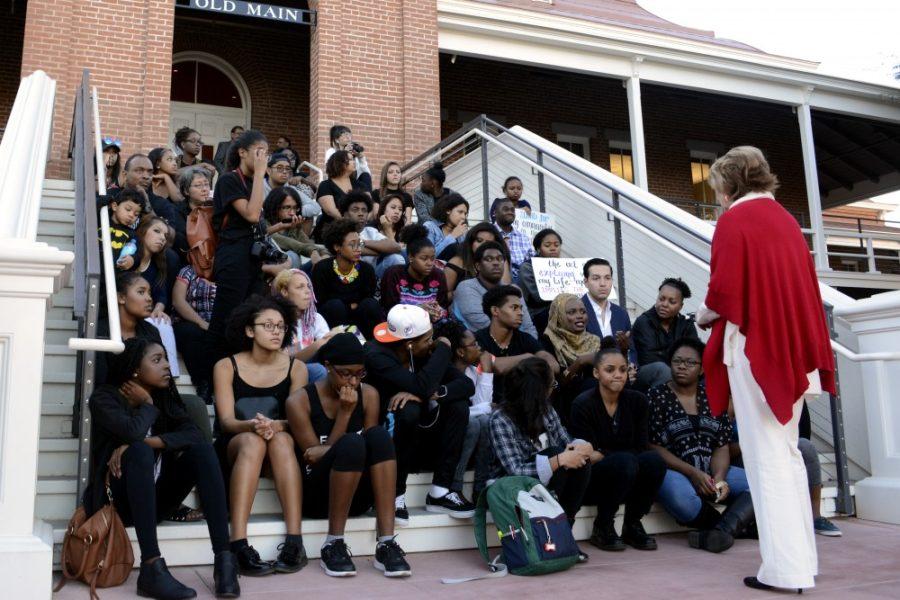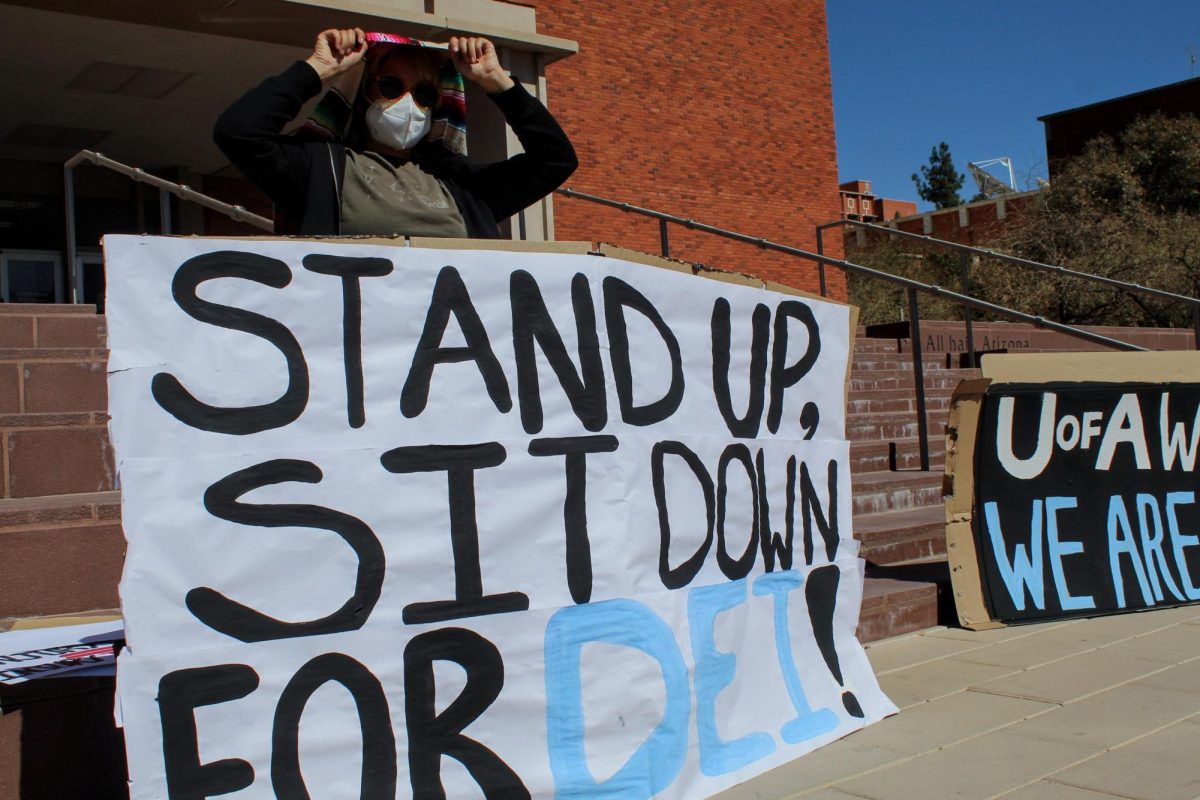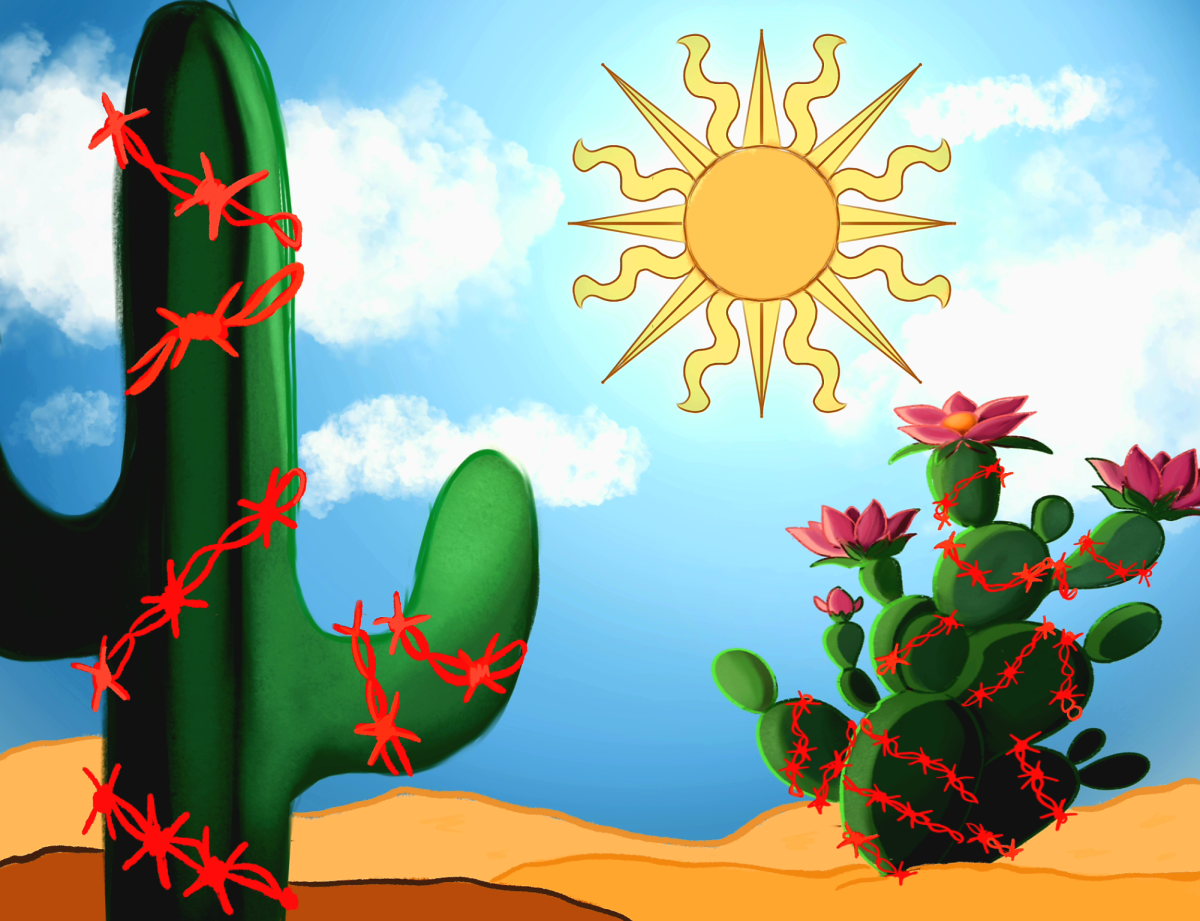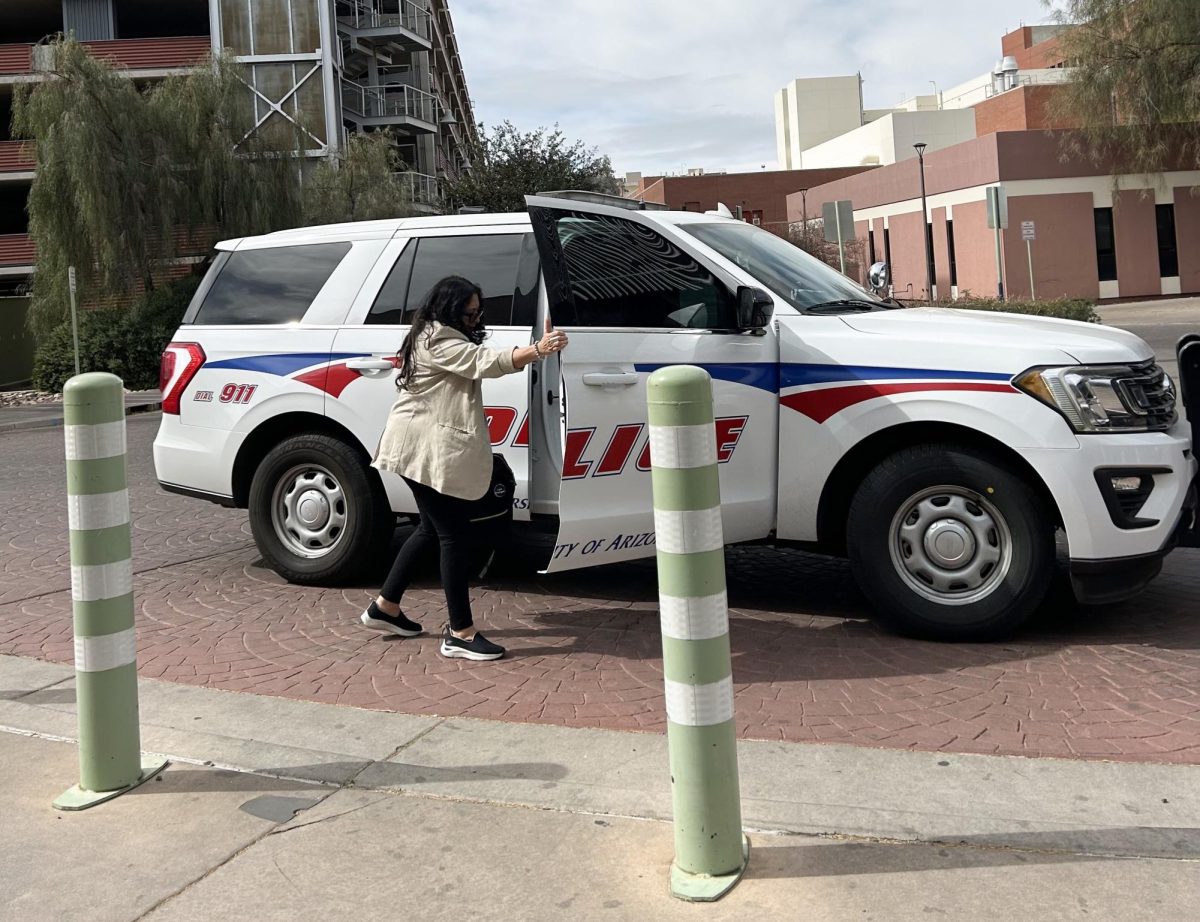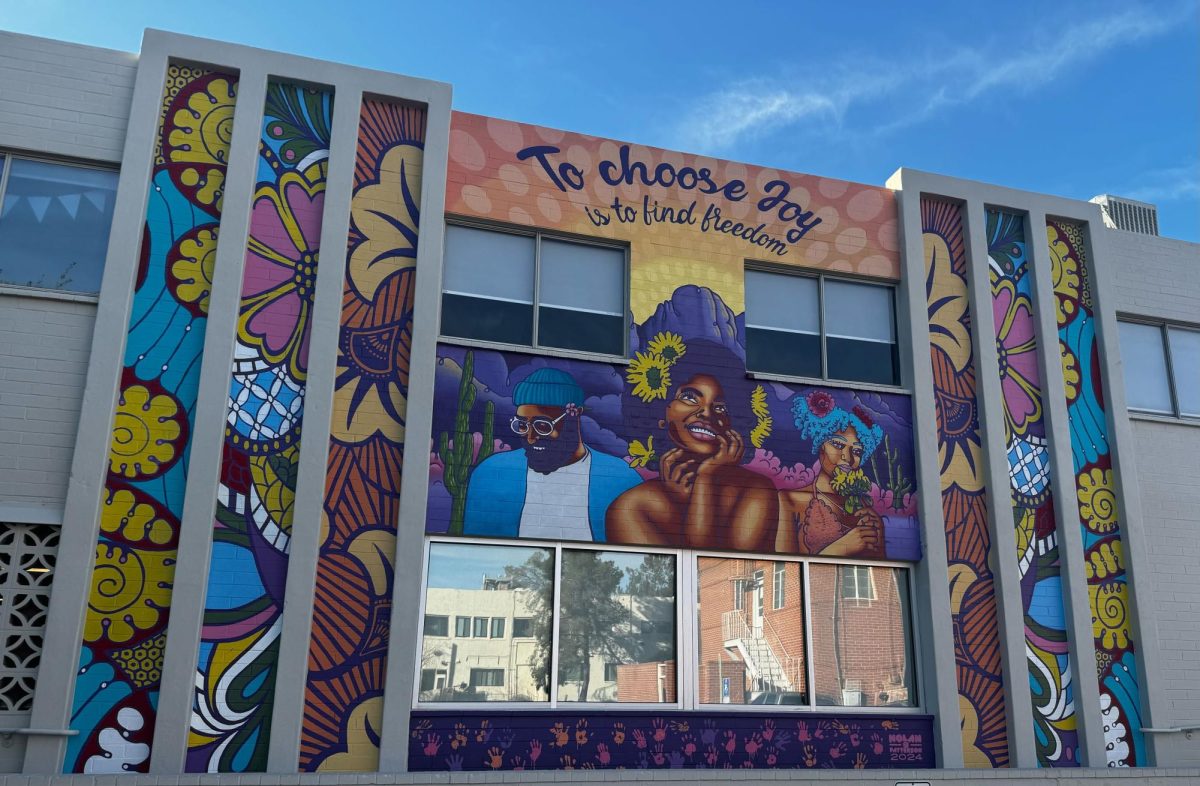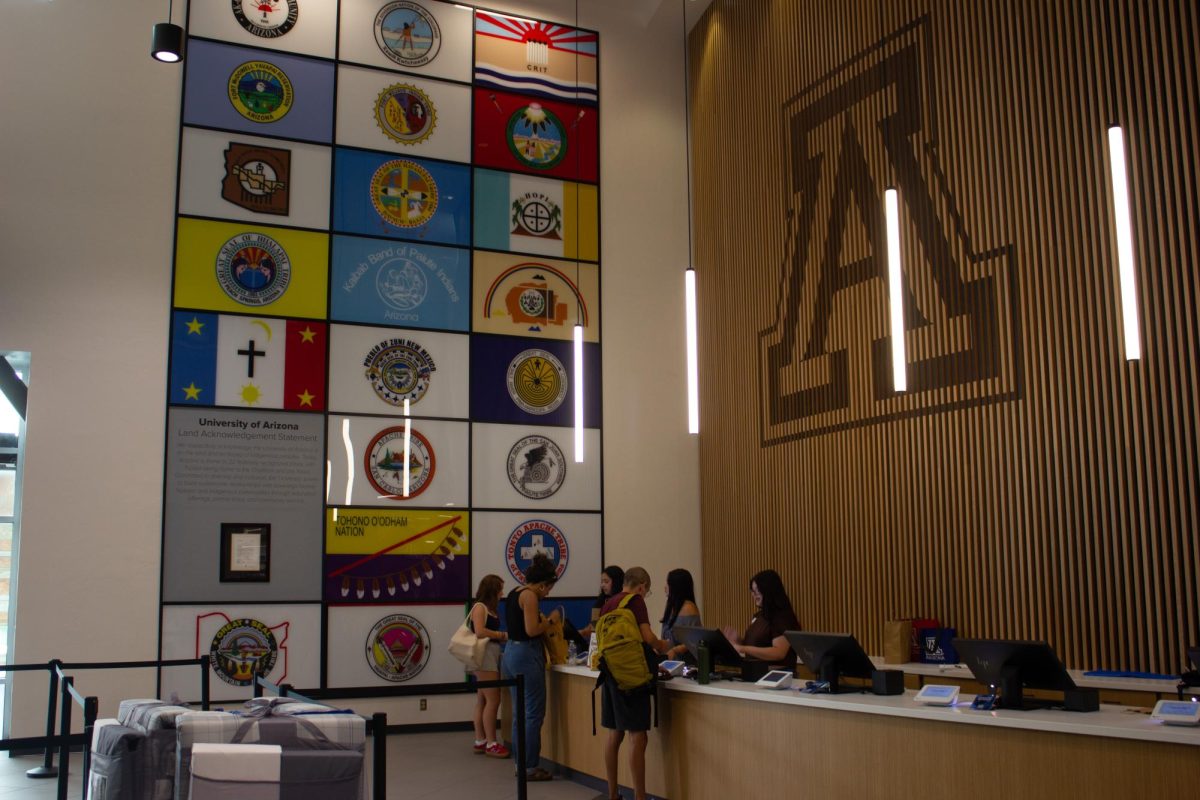The cultural unrest sweeping across the nation’s college campuses has not left the UA untouched. Events that transpired most notably at the University of Missouri have empowered UA students to speak out and create conversations.
On Nov. 13, the Black Student Union held a protest and discussion in front of Old Main in solidarity with Missouri students. President Ann Weaver Hart participated in the demonstration and, following the event, set up a meeting with BSU co-presidents Kevyn Butler and Trinity Goss.
The meeting will be held at the Dr. Martin Luther King Jr. Student Center this coming week.
The evening of the BSU’s protest, an email was sent out by Hart, Chair of the Faculty Lynn Nadel, President of Graduate and Professional Student Council Sarah Netherton and Associated Students of the University of Arizona President Manny Felix, emphasizing the UA’s commitment to freedom from discrimination and the constant improvement of campus climate.
“We will not tolerate any form of discrimination against any member of our community,” the email read. “We, as representatives of the univesity, faculty and undergraduate, graduate and professional students, affirm our commitment to these freedoms and our commitment to constant improvement.”
A week later, African American Student Affairs program coordinator Isoken Adodo received an email from the Faculty Senate requesting to meet with students involved at all of the cultural centers, according to Goss.
The Faculty Senate will attend BSU’s weekly meeting next Wednesday.
BSU’s co-presdients said that these meetings are something they have been waiting for. The two attended the Arizona Board of Regents meeting on Nov. 20, and during the call to audience, spoke about the problems black students face on campus.
Butler said one main problem is retention. First-year retention rates for the Class of 2013 were the lowest for black and Native American students. For both demographics, the retention rate was about 75 percent, according to a 2014 chart by University Analytics and Institutional Research.
Butler called these rates “unacceptable in 2015” and pointed to lack of engagement and financial need as causes for the poor retention.
“Our administration should come to us to figure out what has not been working, so that way they can implement new programs that are new and actually different and don’t sustain the same problems and issues that students of color are facing,” Butler said.
BSU is focusing on a new goal: strengthening ties with the other cultural centers on campus.
On Tuesday, BSU held a potluck and invited leaders from other cultural centers. Representatives from Native American Student Affairs, Asian Pacific American Student Affairs, African American Student Affairs, Movimiento Estudiantil Chicano de Aztlán and ASUA Pride Alliance were all in attendance.
Butler said the potluck was a time of healing and fun for student leaders, who do not often get to take time out for themselves and enjoy a meal together.
“Yes, we’re taking this call to action right now and, you know, we’re getting the necessary, I guess, attention that we need right now,” Goss said. “But we want this for all of the cultural centers, and that is founded in us having relationships and us standing in solidarity — all of us [cultural centers] standing in solidarity — to support what we need and to support our action plans.”
Follow Michelle Jaquette on Twitter.



